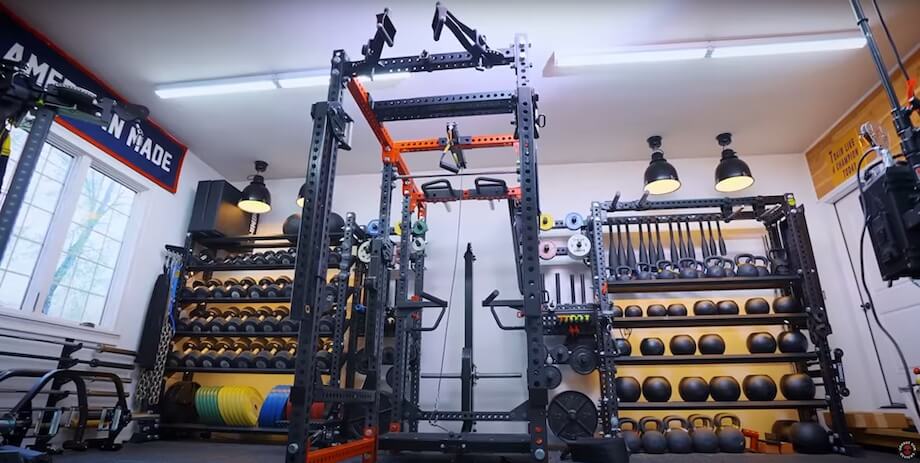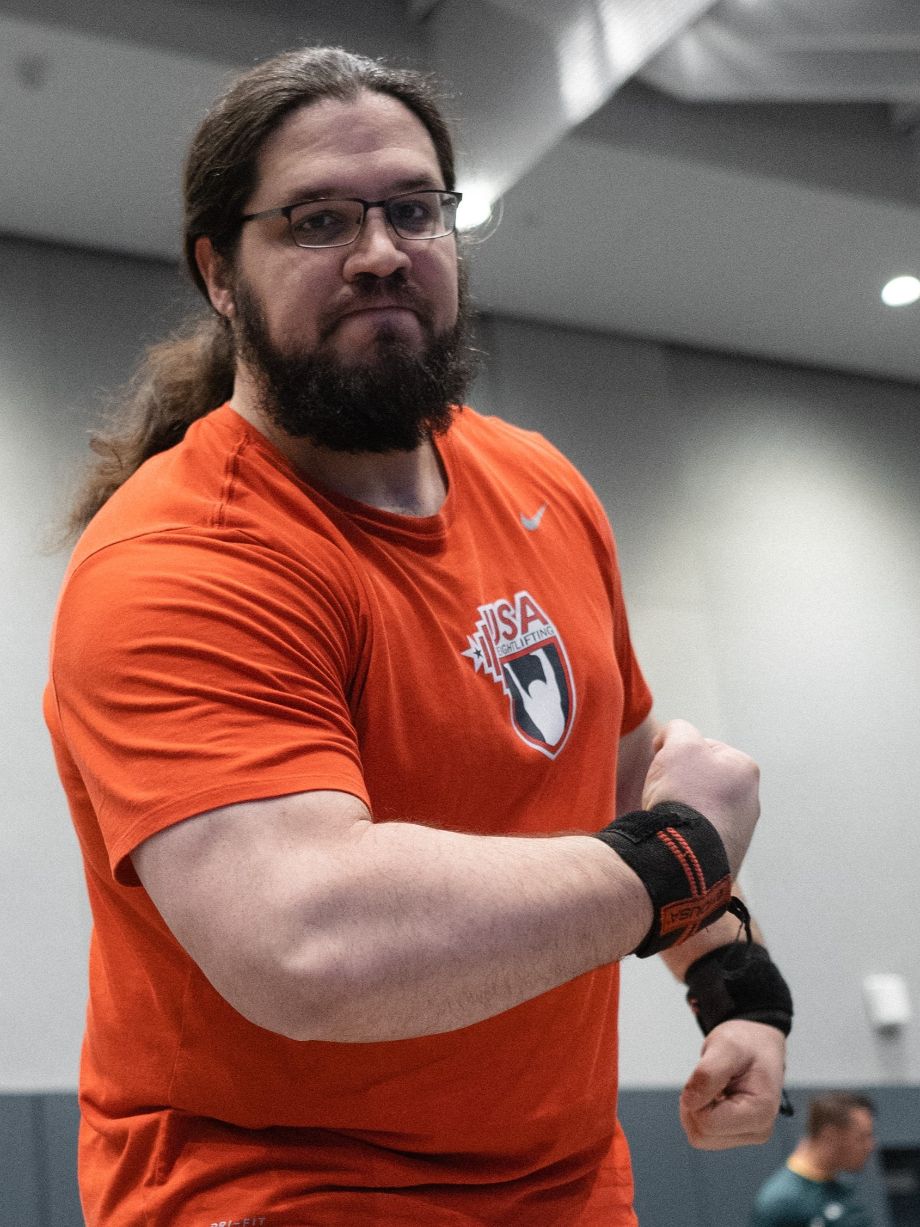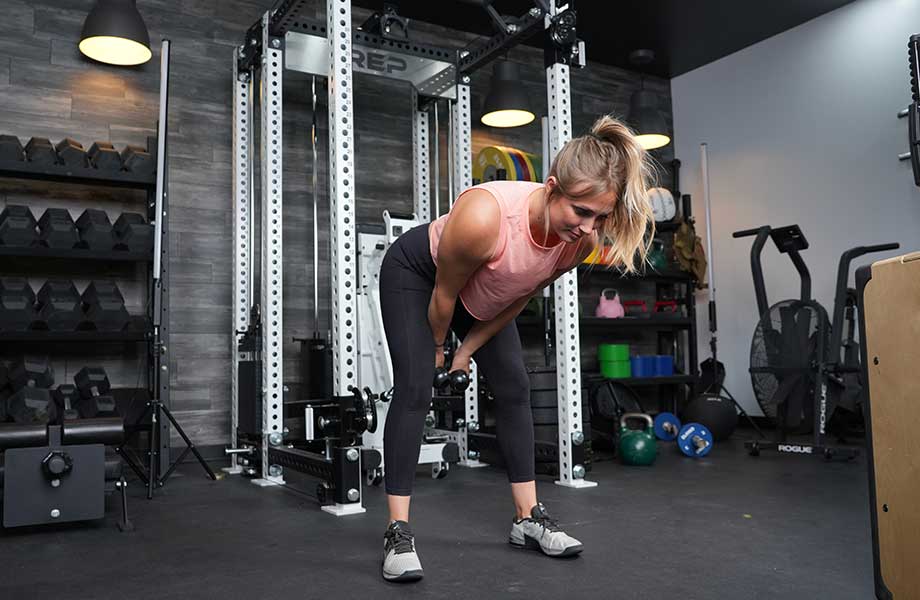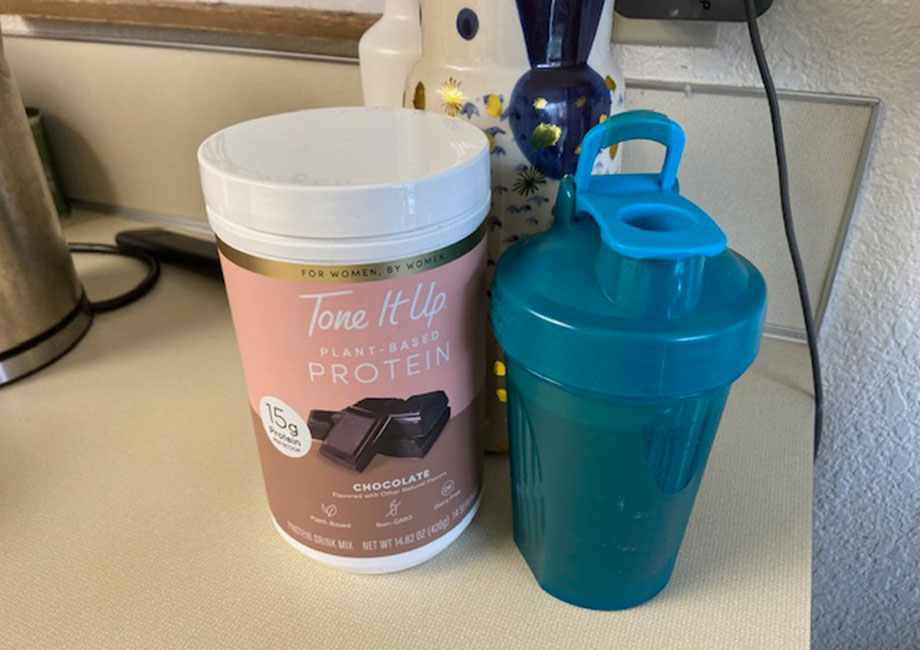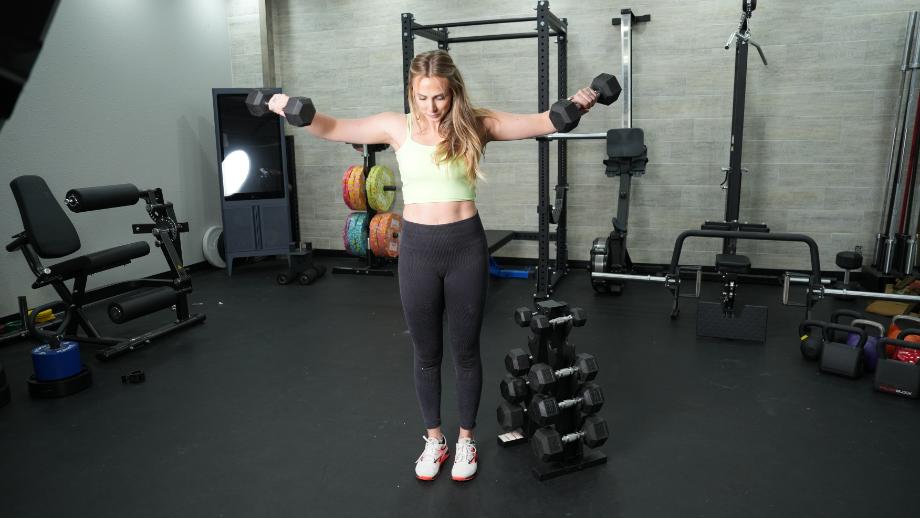Exercising in a home or garage gym can be loud. Unlike standalone buildings housing commercial gyms, noise reduction is going to be vital in your home gym. If you’re working out at odd hours, you’re going to want to keep the noise level down so you don’t wake or disturb your kids or neighbors. That’s why it’s important to soundproof your gym space and gym equipment.
In this article we’ll go over tips and tricks on how to soundproof a home gym. We’ll discuss gym flooring options, like the best soundproof exercise mats, and some other less obvious suggestions as well. Depending on your current gym set-up, you may be able to use a few of these tips, or all of them; regardless, there is something here for you, to help keep the gym noise down, and your workouts running just as smoothly and efficiently.
Proofing Your Gym: Where To Start
Outside of completely changing your workout routine and schedule, there are many useful ways to aid in gym soundproofing. The main idea is to thicken the amount of space a sound vibration has to travel. The more dense matter it has to travel through, the less noise will get past ultimately. If you look at soundproofing your home gym in broad strokes, there are two main things we want to look at to best reduce noise:
- Your gym equipment
- Your gym space
When talking about home gym equipment, we’re talking about reducing the clanging of metal weight plates and other metal equipment, as well as using other equipment to help with sound absorption of impact noise of dropping weights. If we can be smart about the equipment and exercises we perform, then we can reduce noise before even looking at our gym space.
Speaking of which, the best aspect for reducing noise when thinking about your gym space is the flooring, walls, and ceilings. We’ll go over ways for gym soundproofing that’ll improve the sound deadening qualities of the interior of your garage gym, to better reduce noise.
Once you’ve done all these tips, you’ll barely hear a peep from dropping weight overhead…okay, dropping hundreds of pounds from overhead is still going to make a bit of noise, but that noise won’t be heard two blocks down in your neighborhood at least.
Soundproofing Your Equipment
A big aspect of reducing noise in gym equipment is reducing the impact noise of heavy weights, especially when they are made of metal; however, there are other ways to reduce noise in your fitness equipment. Let’s go over some ways to help reduce noise through the gym equipment you use, as well as how you use that equipment.
Use Headphones
I love to work out to loud music, with the volume cranked up and bobbing my head in between lifts. Even though my preferred genre of music doesn’t always have the deepest bass or loudest treble (I’m proud to admit I’ve maxed out my back squats to 80’s love ballads), your neighbors or roommates may not always want to hear your jams during your workout.
You could lower the volume on your speakers for your home gym, but that can lower the sound quality of your favorite Hall and Oates song—obviously “Rich Girl.” Instead, try using headphones, which will keep the tunes up for you, and keep the noise down for those nearby.
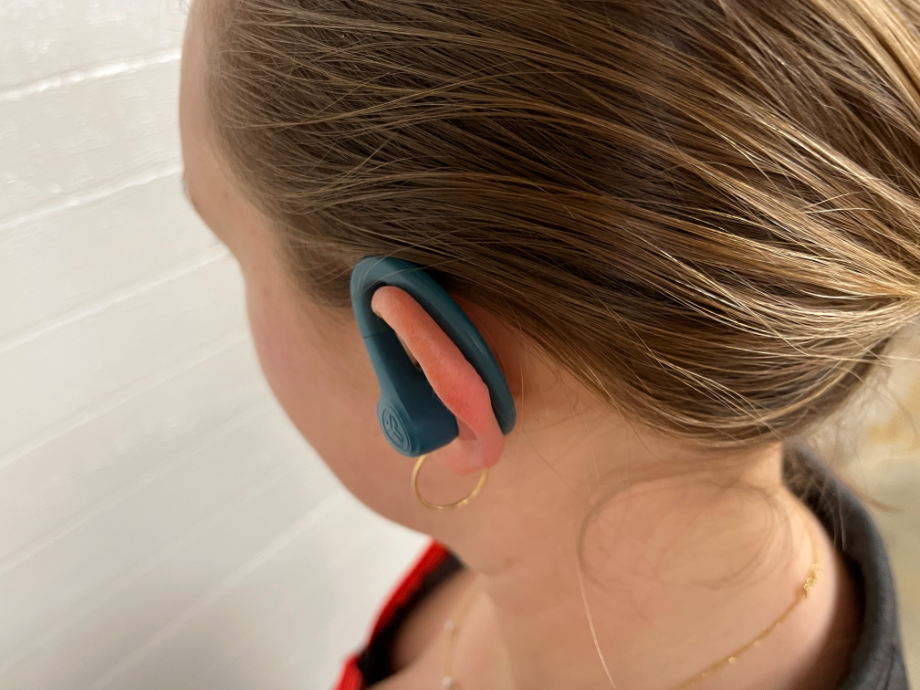
Don’t have a set of headphones? Check out our picks for the best workout headphones on the market for some inspiration.
Get Rubber-Coated Dumbbells and Kettlebells
One of the loudest noises coming from a home gym is from metal equipment. Metal can’t absorb noise like other materials can—namely, rubber. A great way to help dampen sound from free weights like dumbbells and kettlebells is to buy them with a rubber coating. This is already pretty common in fixed dumbbells, with rubber-coated hex dumbbells; additionally, kettlebells can often come with a vinyl coating.
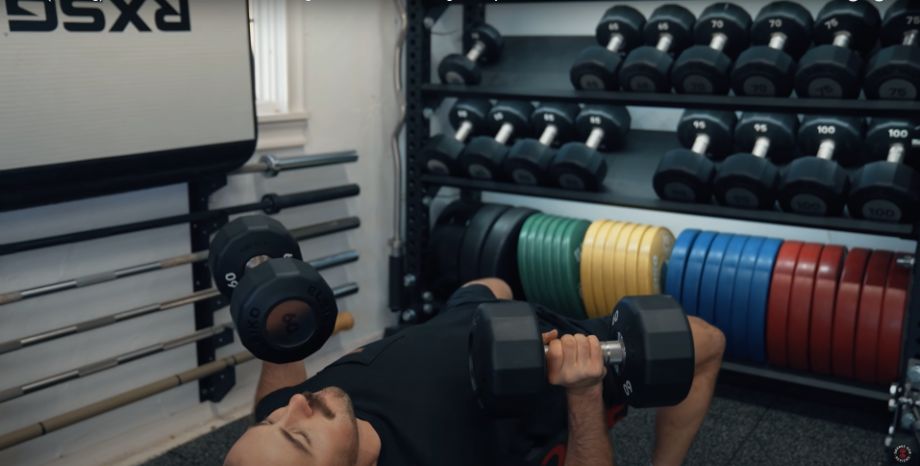
These coatings will help protect the equipment when you drop your equipment on the floor, but they’ll also help dampen the impact noise. It’s a win-win.
As a side note, if you currently have adjustable dumbbells or adjustable kettlebells, you shouldn’t be dropping them anyways. Because of the adjustment gears inside the dumbbells and kettlebells, any significant impact can break something, rendering them unusable. So having these adjustable pieces of equipment should lessen drops, which will lessen noise, too.
Use Bumper Plates
There are few things more satisfying than hearing the clank and clang of heavy metal weights at the top of a back squat. However, metal contact with metal can produce a lot of noise in your home gym. For this reason, you can use rubber bumper plates to lessen the amount of noise while lifting weights. Whether it’s deadlifts, squats, cleans, or presses, bumper plates will help reduce the noise the weights can make while loaded on the barbell together.
RELATED: How to Squat Heavier, According to An Olympian

Use Tape On Metal Equipment
If you’re looking to reduce noise, but all your current equipment is metal and has no coating, then it might be tough to spend money to outfit your gym with entirely new equipment. For this reason, if you’re in a bind, you can use cloth tape and wrap the ends of dumbbells, weight plates, and kettlebells with a thin layer. This will act similarly to a rubber coating and give your weights a little bit of noise reduction.
Typically, the best squat racks have a plastic lining on their J-cups, both to protect the bar and rack, but also to reduce impact noise. If your rack doesn’t have UHMW plastic inserts, you can line the J-cup with tape as well, to protect your equipment and to reduce the noise from reracking a barbell.
This isn’t my favorite tip, as cloth tape will get dirty quickly once you apply it to weights and racks, and if you decide to remove it, it can leave a sticky residue, or even peel off paint or coatings from your gym equipment. However, if you’re desperate for noise reduction, this will work in a pinch. You can get creative, too; GGR’s Head of Content Kate Meier has lined J-cups with socks before at her gym, preventing scratching and helping deaden noise.
Maintain Your Gym Equipment
Whether you’re a weightlifter, a fitness enthusiast doing CrossFit, or a cardio treadmill runner, your equipment is going to make some noise; it’ll make more noise if you don’t keep it clean and maintained.
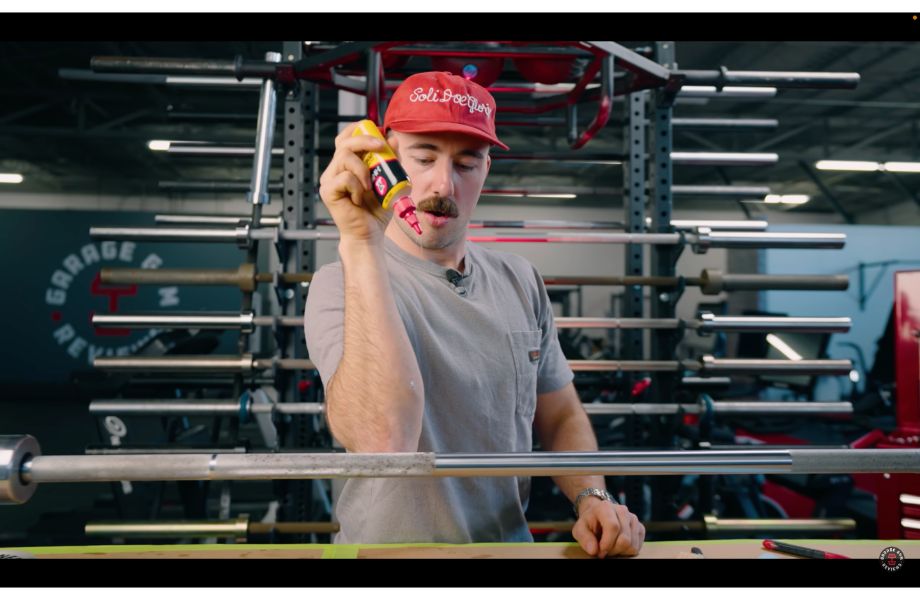
The best Olympic barbells should have a smooth spin on the barbell sleeves, but if it isn’t cleaned and maintained properly, the barbell can get gunked up and the spin can worsen, and make so pretty rough whining and scraping noises when in use. Make sure that you clean your barbell and weights routinely, also keeping the internal workings lubricated properly, to keep the noise to a minimum.
RELATED: How To Clean A Barbell
The same goes for treadmills. Regularly cleaning and maintaining your cardio equipment will help keep the machine’s vibrations low, reducing noise. The treadmill belt can dry out over time, and if it isn’t lubricated routinely, the belt will create more vibrations and noise. Every treadmill is a little different, and we’d recommend reading the instruction manual to learn the best way on how to clean a treadmill.
Build A Dedicated Lifting Platform
Sometimes you’re going to drop weights, sometimes it will be from overhead, and sometimes it will be heavy. As an Olympic weightlifter, I can relate. To deaden some of the impact noise after dropping an Olympic lift, you can build a dedicated weightlifting platform in your own home gym.
Typically, this is a multi-layered platform built out of plywood and rubber to solve two problems: protecting your floor from dropping weights, and reducing sound reverberations upon impact. If you’re only planning on deadlift on this platform, a smaller platform will work—about 4-feet-by-8-feet. However, if you want to snatch and clean and jerk, you’ll need more room, maybe 8-feet-by-8-feet.
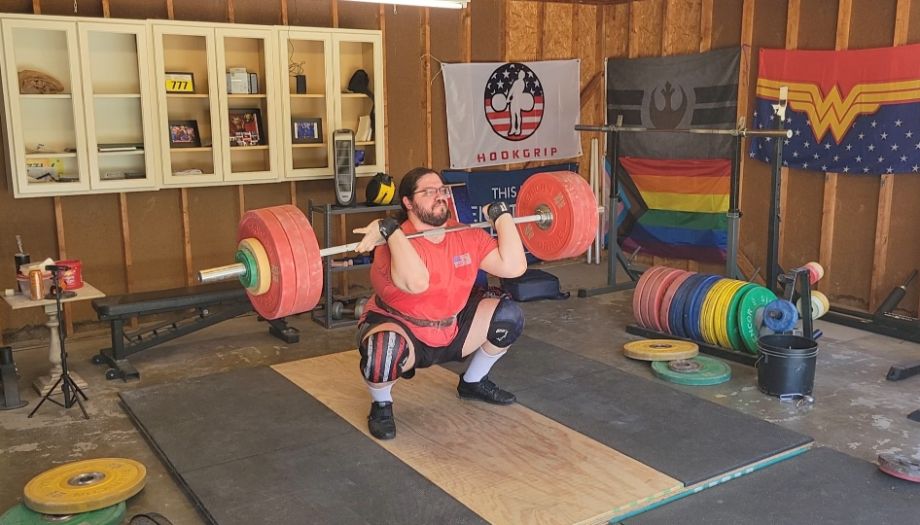
You can purchase a lifting platform from different companies, but you could also build your own—it’s pretty common to do. You can look at this DIY weightlifting platform with an attached squat stand for some guidance.
Silencer Pads
Another great way to reduce the noise from dropped weights are silencer pads. Made with a durable vinyl exterior, and a dense foam interior, silencer pads absorb a lot of shock when weight plates are dropped on them.
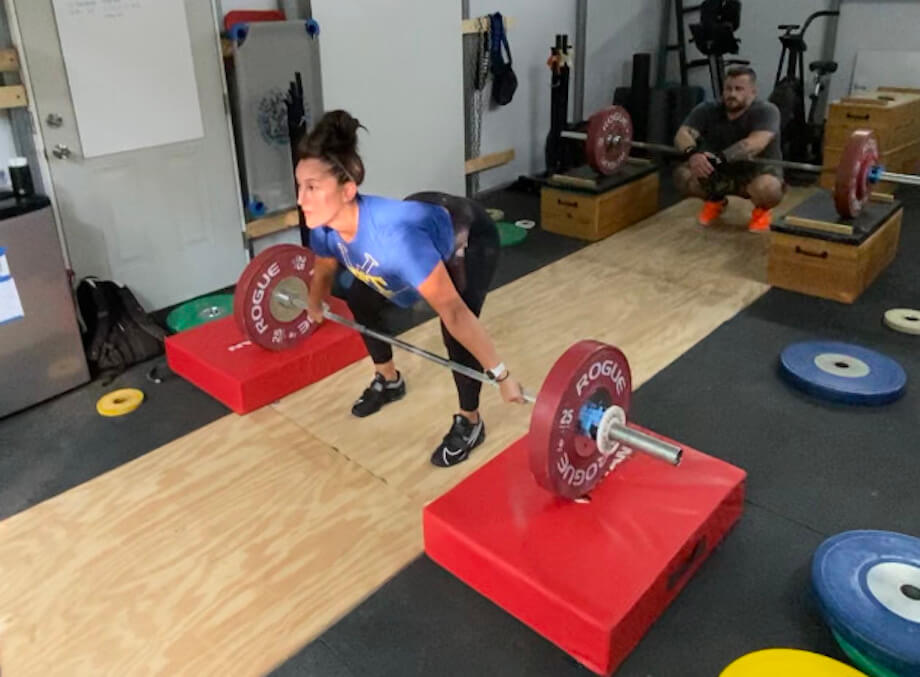
They’re extremely efficient at deadening noise. Although it won’t completely eliminate noise, this is one of the best ways to reduce noise from dropped barbells. Kate uses these at her gym during early and late hours with clients, so the gym won’t disturb nearby neighbors.
Use Quieter Equipment
This might be a no-brainer, but some workout equipment is quieter than others. If you’re worried that a treadmill or rowing machine might be too loud, then maybe jumping rope is a quieter option for a cardio workout. As far as free weights go, a sandbag or slam ball will make less noise upon dropping than a kettlebell or dumbbell. If your workout routine can afford it, being creative with the equipment you use can be a great way to reduce noise.
Try Some Bodyweight Workouts
Not everyone can make this adjustment, but changing the types of exercises and workouts you’re performing can affect your noise reduction for the better. You can use more bodyweight movements instead of weight training to reduce the noise of equipment. If you’re open to changing up your routine, you can try a suspension trainer, which is a great method to get a full-body workout while only using your bodyweight as resistance.
RELATED: Best Full-Body Workout Machines
I also understand that you may not want to adjust your workouts to entirely bodyweight movements; as a competitive weightlifter, I can’t afford that myself. However, just throwing in some bodyweight exercises as accessory work at the end will reduce the amount of noise during your entire workout, and your neighbors will thank you for it.
Soundproofing Your Gym
Now that we’ve gone over all the ways to reduce noise using your own equipment, let’s take a look at how our gym space can help reduce noise.
Consider Your Gym Location
I competed at an international weightlifting competition that was held in a hotel resort years ago. Originally, they set up the training hall on the second floor, thinking it’d be fine for dropping weights. After one day, they had to make a large tent in the parking lot for training. The reason? The hotel hadn’t considered the noise; the weights dropping on lifting platforms could be heard up to the top floor eight floors above. All this to say that location is vital in reducing sound.
If you’re still in the process of setting up your home gym, take a second to make sure you’re in the right spot in your house. There may not always be a best solution, but if a garage gym or basement gym is viable, that will help keep your gym and noise away from other family members in your house. You don’t want to set up your gym right next to a bedroom if you can avoid it.
Add Drywall
If you’re lifting in a garage gym, and the walls are bare, one of the easiest ways to soundproof your walls…is to add a wall. The goal of soundproofing is to provide more material for sound waves to travel through, reducing the intensity of those waves and vibrations and lessening noise. Adding drywall adds another layer for sound to travel through, reducing noise.
There are sound reducing drywall options available, if you want to spend a little more money for a little less noise. However, just using regular drywall will still help dampen sound escaping your home gym.
Add Insulation
Before you put up that drywall though, make sure you put up some insulation first. Mostly used for energy-efficient climate control, insulation is also great at reducing sound coming from your gym.
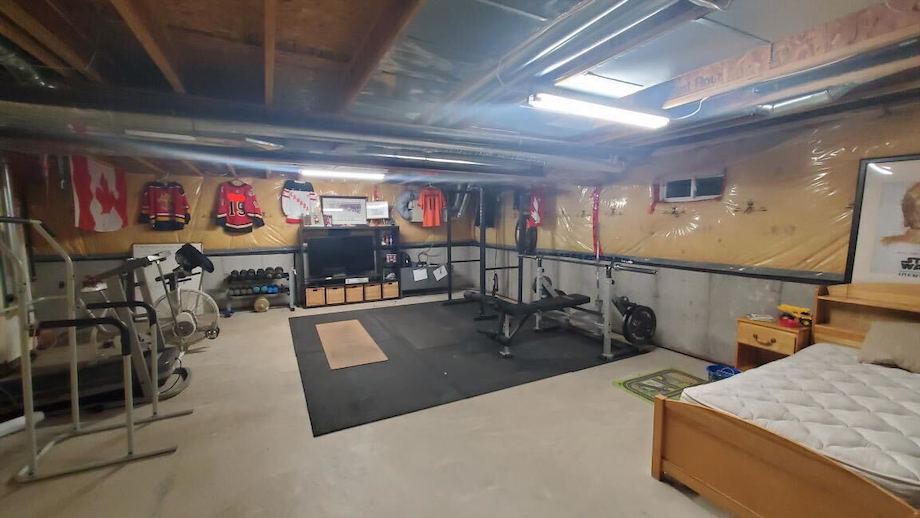
You can use fiberglass insulation like blanket batts or rolls, or you can use spray foam insulation. The foam insulation will be best at soundproofing your gym, but it’ll also be the pricier option. Check out this guide on how to insulate a garage for more information.
Check For Open Gaps
Sound travels fastest and best in open air, so it’s important to double-check for open gaps that sound can travel through—like under a door or through a window seam. Any gaps can be sealed with weather stripping or caulking.
Use Acoustic Panels
Another way to further insulate your walls from sound is to use acoustic panels. Typically seen in recording studios, these panels are typically made of an acoustic foam that is dispersed in a pattern to further prevent noise from leaving a room. Higher end paneling can be made of fiberglass, and these panels tend to be squares, typically 1 foot long and 1 foot wide.
These panels can be stylish, with a variety of colors and patterns to choose from; however, putting these across your entire home gym can be pricey, so there are some budget options to improve noise reduction on your walls. The simplest is hanging carpeting or blankets along the walls. This can look messy though, depending on how well or poorly the blankets are hung. A creative idea I’ve seen is hiding cheap towels and blankets in canvas art, though.
Use Rubber Flooring
One of the best home gym flooring options to help soundproof your garage gym is rubber flooring. Rubber floor mats are thick and dense, helping reduce sound traveling through them. Additionally, they’re fantastic for shock absorption, which will further reduce noise from a dropped barbell. Typically, the thicker and denser a mat is, the more shock and sound absorption it can provide.
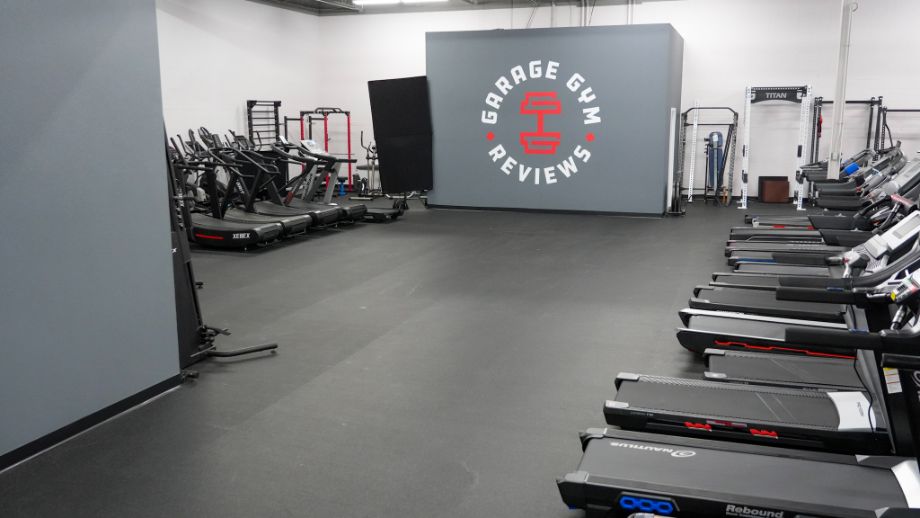
There are rubber flooring tiles made to dampen sound like Eleiko Gym Floor Tile, but they can become pricey to outfit your entire gym with them. Instead, did you know you could use horse stall mats for home gyms? These thick rubber mats are made of recycled rubber and are incredibly dense and shock absorbent, plus they’re a bit more budget-friendly compared to sound-dampening floor tiles.
Consider Underlayment
Another addition to your floor to further dampen sound is underlayment, basically a subfloor between your house’s floor and your gym flooring. Typically a thinner rubber or vinyl sheet, these are made to further dampen sound and impacts into the floor. This will add longevity to the concrete or hardwood flooring underneath, while also absorbing shock and sound more.
Add A Treadmill Mat
If you have a treadmill, elliptical, or other piece of cardio equipment, you know that they can be loud. Treadmills in particular cause loud vibrations that can travel through the floor and just be an annoying sound. If your treadmill is making a lot of noise, you can help quiet it down by adding a treadmill mat underneath.
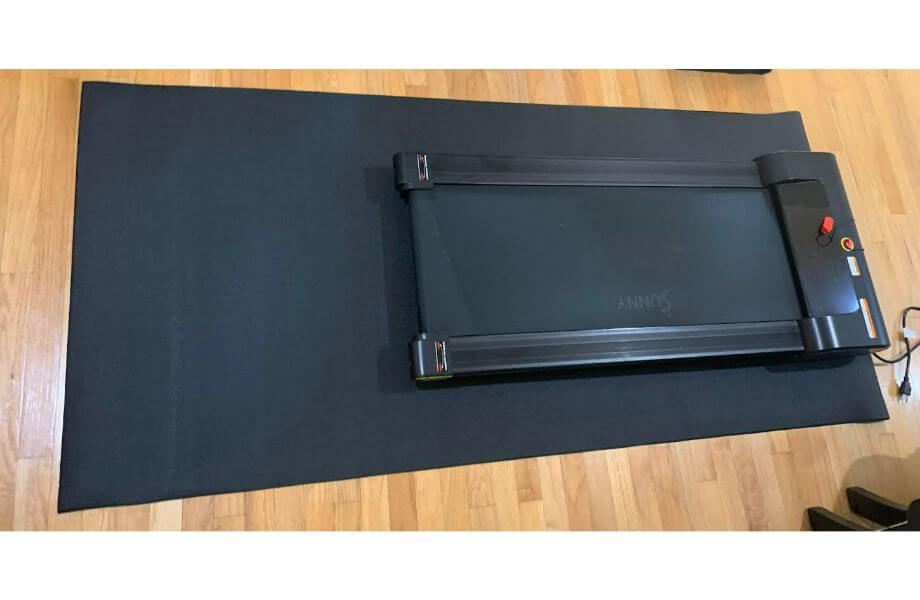
The best treadmill mats are thinner vinyl mats that help absorb vibrations from your cardio machine, and help reduce the noise coming from the machine. Absorbing vibrations won’t only help reduce noise, but also decrease wear and tear on your cardio machine, improving the longevity of your equipment.
RELATED: Best Quiet Treadmills
Install Acoustic Ceiling Baffles
Yet another way sound can escape out of your gym is through the ceiling. While insulating and adding drywall can be done if you’re missing a ceiling, what can you do if you already have an insulated ceiling? Try adding acoustic baffles.
Baffles are hanging strips of materials that help catch sounds on their way up to and through the ceiling, reducing their intensity overall. Baffles can be made of many different materials, ranging from fiberglass to blankets. You can even DIY baffles by hanging straps of rubber or carpeting along your ceiling.
Baffles can hang low, though, so if you already have a low ceiling this may not be an effective solution to soundproofing your home gym. But if your ceiling is high enough, baffles are sure to help reduce noise coming from your gym.
Add A Sound Maze to Air Vents
If you have an air vent in your gym, you don’t want to cover it up; you need good airflow in any gym setting. Still, an air vent is a simple way to have sound escape your home gym. One way to combat this is by creating a sound maze in your air vent.
But how do you make a sound maze? It’s pretty simple. You can take sheets of rigid foam board and place them in the vent, staggered side to side, but with enough distance for air to travel easily. The pattern of foam boards will create a sort of zig-zag pattern, which will be simple for air to travel through, but will prove to be a challenge for sound to travel through effectively. This will reduce your gym’s noise even more.
How to Soundproof a Home Gym: Final Thoughts
There are many ways to help soundproof your home, and many things to consider. Depending on your needs and the set up of your own home gym, not every point of advice may be feasible or useful. However, if you consider these main points, you’re sure to be on the road to lessening the overall noise in your home gym space.
- Soundproof your equipment by adding a rubber coating when possible, and using bumper plates.
- Prevent metal on metal contact.
- Clean and maintain your gym equipment regularly.
- Insulate your walls and ceilings, and add drywall where appropriate.
- Use dense rubber flooring to help absorb shock and reduce noise.
- Use silencer pads to drop weights from overhead.
- Add acoustic dampeners, like panels and baffles.
Follow these recommendations, and your home gym will have immediately quieter results.
How to Soundproof a Home Gym: Q&A
How do you soundproof a gym floor?
The best and fastest way to soundproof a gym floor is to use shock- and sound-absorbent rubber flooring. A thicker rubber mat is dense and will absorb a lot of shock from a dropped barbell. Absorbing the shock will also lessen vibrations upon impact, reducing overall noise from the drop.
You can also use an underlayment underneath your gym flooring, a thin subfloor that is used to further reduce vibrations and noise. Even more, you could drop your weights on silencer pads, which will absorb impact noises through a dense foam pad.
How do I block noise on a shared wall?
If your shared wall is already properly insulated and is boarded up, then the best thing to do would be using acoustic panels, patterned foam squares that help lessen vibrations and sound escaping from each room. Outfitting an entire wall with acoustic panels can be expensive, so a cheaper option would be hanging carpets or blankets on the wall.
What is the best way to soundproof a gym?
There are many effective ways to soundproof a home gym. Things to look at and consider are:
Using rubber-coated equipment to reduce metal-on-metal contact and noise.
Cleaning equipment regularly to prevent excessive noise.
Insulating walls and ceilings properly.
Using a dense rubber flooring to reduce impact noise.
Using silencer pads during lifting and acoustic panels on the walls to further reduce noise.


